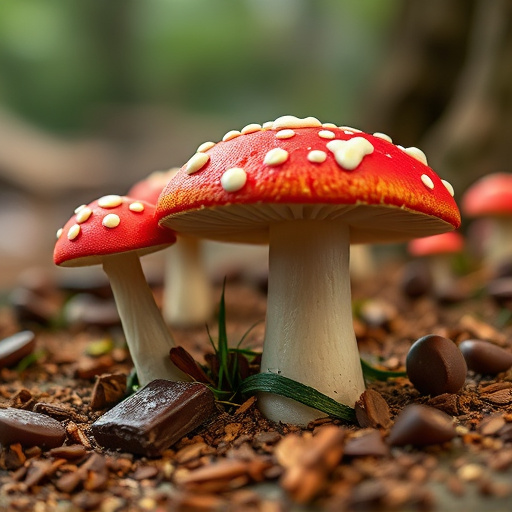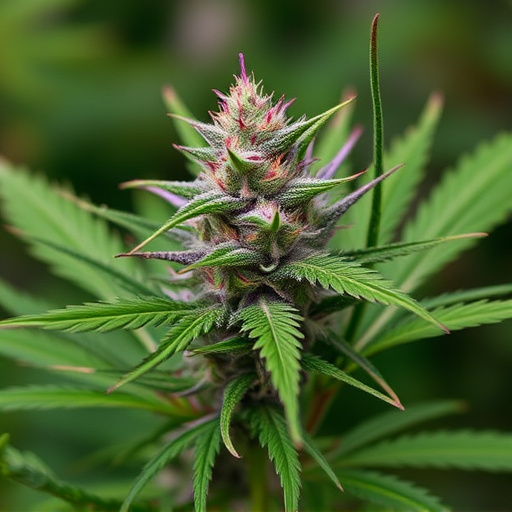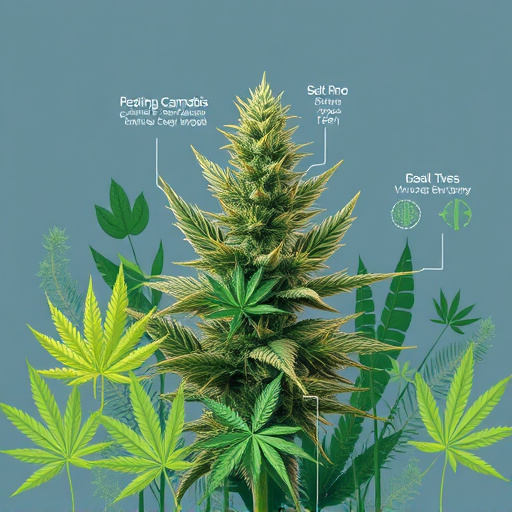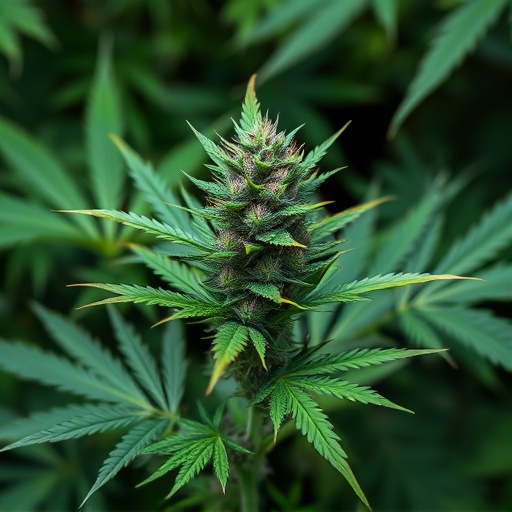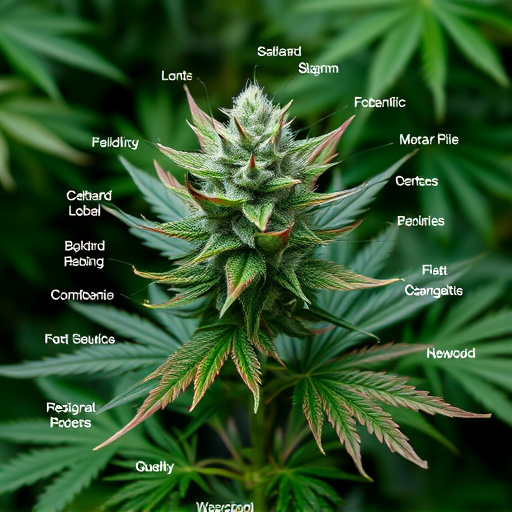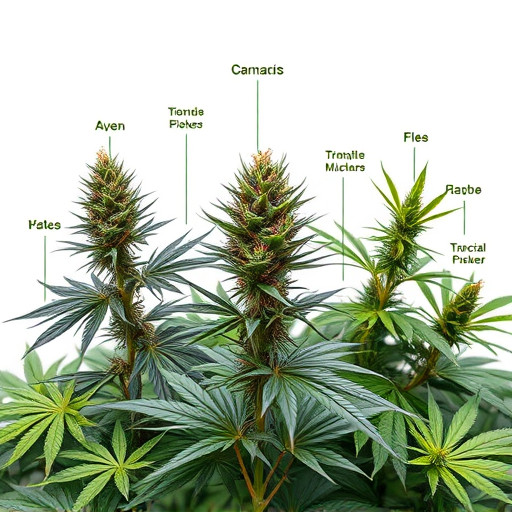Terpenes, aromatic compounds in medical cannabis, create diverse scents and flavors across different strains. Each terpene offers unique characteristics, influencing therapeutic effects. Understanding terpene profiles is vital for patients seeking tailored treatments for conditions like pain, anxiety, or sleep issues, as it allows them to select strains that best meet their needs.
Uncover the aromatic secrets behind the diverse world of medical cannabis with a focus on terpenes—the unsung heroes of cannabis scents. These volatile organic compounds not only contribute to the unique aromas and flavors of different strains but also play a pivotal role in modulating their effects. By exploring terpene profiles, we can better understand how they distinguish one strain from another, offering a deeper connection between smell, taste, and the therapeutic benefits associated with specific medical cannabis varieties.
- Terpenes: The Unsung Heroes of Cannabis Aromas
- How Terpenes Impact the Effects of Different Medical Cannabis Strains
- Exploring the Role of Terpenes in Distinguishing Cannabis Strains' Scent Profiles
Terpenes: The Unsung Heroes of Cannabis Aromas
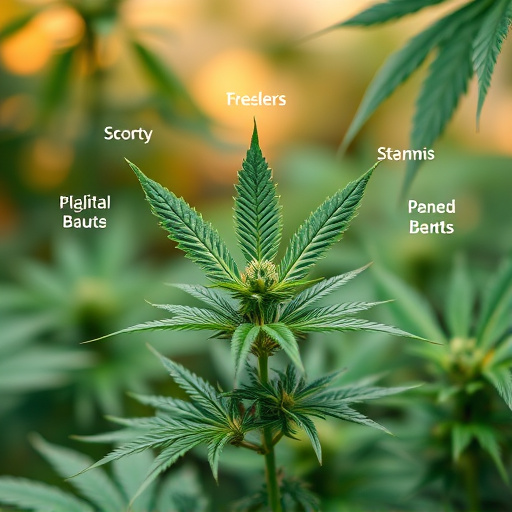
Terpenes, often referred to as the “unsung heroes” of cannabis aromas, are a diverse group of aromatic compounds that play a pivotal role in shaping the unique scents and flavors of different strains of medical cannabis. These organic chemicals, naturally produced by various plants, including cannabis, contribute significantly to the sensory experience of smoking or consuming cannabis products.
Each terpene offers its own distinct aroma and flavor profile, ranging from fruity and floral to spicy and earthy notes. For instance, myrcene is known for its earthier, musky scent, while limonene delivers a refreshing citrusy aroma. The combination of these terpenes in different strains creates a vast array of olfactory experiences, adding depth and complexity to the overall cannabis experience. Understanding terpenes helps users appreciate the intricate relationships between scent, flavor, and the potential therapeutic effects of various medical cannabis strains.
How Terpenes Impact the Effects of Different Medical Cannabis Strains

Terpenes, often referred to as the “aromatic molecules” of cannabis, play a pivotal role in defining the unique scents and flavors associated with different strains. Beyond their contribution to the sensory experience, terpenes also significantly influence the effects that medical cannabis can have on the user. Each terpene possesses distinct properties that can either enhance or modify the therapeutic benefits attributed to specific strains. For instance, myrcene, known for its earthy and musky notes, is often linked to inducing relaxation and sleepiness, making it a popular choice for evening use. Conversely, limonene, with its citrusy aroma, is associated with uplifting moods and promoting mental clarity.
The interplay between terpenes and cannabinoids, such as THC and CBD, is what truly sets apart the effects of various strains. Certain terpenes can potentiate or amplify the actions of these cannabinoids, leading to enhanced therapeutic outcomes. This complex interaction explains why two strains with similar cannabinoid profiles can have vastly different experiences. For medical cannabis patients, understanding the terpene profile of their chosen strains becomes crucial in tailoring their treatment to specific needs and desired effects, be it for pain management, anxiety relief, or sleep aid.
Exploring the Role of Terpenes in Distinguishing Cannabis Strains' Scent Profiles

The role of terpenes in distinguishing cannabis strains’ scent profiles is nothing short of remarkable. These aromatic compounds, produced naturally by cannabis plants, contribute significantly to the unique and diverse olfactory experiences associated with different strains. Each strain possesses a distinct terpene profile, allowing connoisseurs to detect nuances that can vary from fruity and floral to earthy and spicy notes.
Exploring these terpene profiles offers a deeper understanding of why certain strains evoke specific feelings or sensations. For instance, myrcene, known for its earthier and musky aroma, is often linked to relaxing effects, making it prevalent in many strains sought after for their sedative properties. Conversely, limonene, with its bright citrusy scent, is associated with uplifting and energizing effects, commonly found in strains preferred for daytime use. As such, the terpene makeup of medical cannabis strains plays a crucial role in tailoring experiences to individual preferences and therapeutic needs.
Terpenes, often referred to as the unsung heroes of cannabis, play a pivotal role in creating the diverse and distinct scents of various strains. These aromatic compounds not only contribute to the unique odours we associate with different medical cannabis strains but also significantly influence their effects on the body and mind. By exploring the intricate relationship between terpenes and scent profiles, we gain a deeper understanding of how these natural elements help distinguish one strain from another, enhancing the overall experience for users seeking specific therapeutic benefits.


